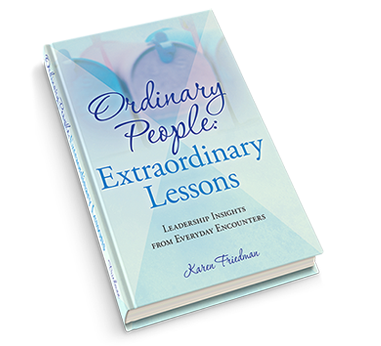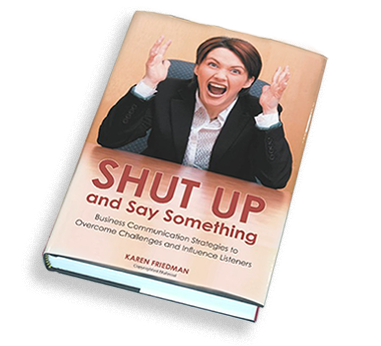I was preparing to work with a researcher who has to give an important 30-minute talk to investors. I asked her to send over her remarks for me to look at before we get together. I get the email, hit print and leave my office for a few minutes.
When I return, the printer is still printing. Thinking that something is wrong with my printer or that I accidentally told it to print multiple copies, I scramble through the pages only to realize the endless ink spewing into the print tray is all hers! Fifty pages. Single spaced. Written word for word.
Like many technical people, this person doesn’t understand the difference between writing for the eye and writing for the ear. Eyes can read white papers, articles, memos and emails that are often ripe with long sentences and multisyllable words. Eyes can glance through verbose information, re-read it if something is not initially understood or put it down and return later.
Ears can’t rewind or replay what a speaker has said if they missed something or need clarification. There is nothing wrong with writing out a speech word for word. In fact, it’s what you should do. However, if you try to speak it the same way, you will surely lose your audience.
When we talk with people, we don’t read to them. Rather, we have conversations. Our sentences are shorter, sometimes spoken in phrases and we naturally pause between thoughts. Our pitch, tone and pace automatically vary. You should think of delivering talks and presentations the same way.
When we write for the eye to read, we are more likely to keep our eyes down to find our place instead of making eye contact with our listeners. We also tend to hold onto the podium instead of gesturing or moving as we do when conversing.
After you’ve written your talk, it’s best to go back through it line by line and speak it out loud as if you were talking to a colleague or friend. Look for places to shorten sentences, eliminate and simplify words and put thoughts into phrases to help you be more conversational. Often recording it and playing it back will help you hear how you’ll come across to others.
For example, instead of saying “the production efficiencies will promote versatility and enhance capacity in an economically feasible way,” which is the way you might write it, explaining it out loud you might say “being more efficient at our production facility means we can produce and distribute product faster.”
Additionally, instead of single spacing words, double space them. It’s easier to find your place when there is white space in-between. Pump up the fonts as well. We typically write in 12-point font, but larger letters are easier to see when speaking. It’s also helpful to type your talk in the center of the page, leaving the top and bottom of the paper blank so your audience isn’t seeing the top of your head when you glance down.
Like an animated conversation, people engage as soon as we talk. For example, if we’re excited about the Philadelphia Eagles, we might start the conversation by saying “Did you see that game? The Eagles were awesome!” Then we would talk about the plays and details.
Talks and presentations should also grab attention as soon as you speak. Instead of reading the agenda word for word or spending the first few critical minutes telling people what you are going to talk with them about, get to it as quickly as possible as you would in a conversation.
Look at the difference:
Unexciting: So I thought I’d start by talking about the complexity of our system and emphasizing the importance of our strategy to create synergy and develop global programs, which is the theme we want to come through today because we aspire to be a world leader. And what I would say is …
Engaging: We have made tremendous progress in the past year and thanks to each and every one of you, we are well on our way to becoming a global leader. Today, we are excited to announce several new initiatives and international partnerships that will continue to advance our goals.
Studies say listeners decide to tune in or tune out in the first minute of your talk, which is why you need to address what they care about quickly. Using phrases such as “So, I thought I’d start with” or “What I would say about that is” or “Another theme I hope will come through is” will eat up your time and theirs.
Instead, you can provide an overview of what you’re going to talk about, present a problem that you’ll solve, share a story or experience that drives an important message, state a staggering statistic or ask a thought provoking question to set the tone and command attention.
Use phrases such as “What this means to you” or “The reason this is important” as you might when conversing with someone face-to-face. This also helps your listener better understand how the information you’re sharing affects or benefits them.
Closing remarks are similar. “Thank you” or “Are there any questions?” is not an effective close. Your final words are your last opportunity to drive home a message or call to action.
A few more reminders:
Practice Out-Loud
Always practice out-loud. This will help you enunciate, eliminate buzz-words and edit as you go so your talk is easy for the ear to understand.
Bullet Proof
When you have practiced and know it really well, try to turn the words into bullet points so you can talk, gesture and sound as if you are having a conversation.
Internalize, Don’t Memorize
If you try to memorize your speech, you risk not being in the moment because you will be too focused on what you have to say next. You don’t have to say it the same way every time.
Finally, think of your talk as an extension of yourself. You’re an expert speaking to help others better understand what you know. If you are engaging and strive to make sense of information for them, they should be able to listen with their ears even if their eyes are closed.








Leave a Reply
You must be logged in to post a comment.